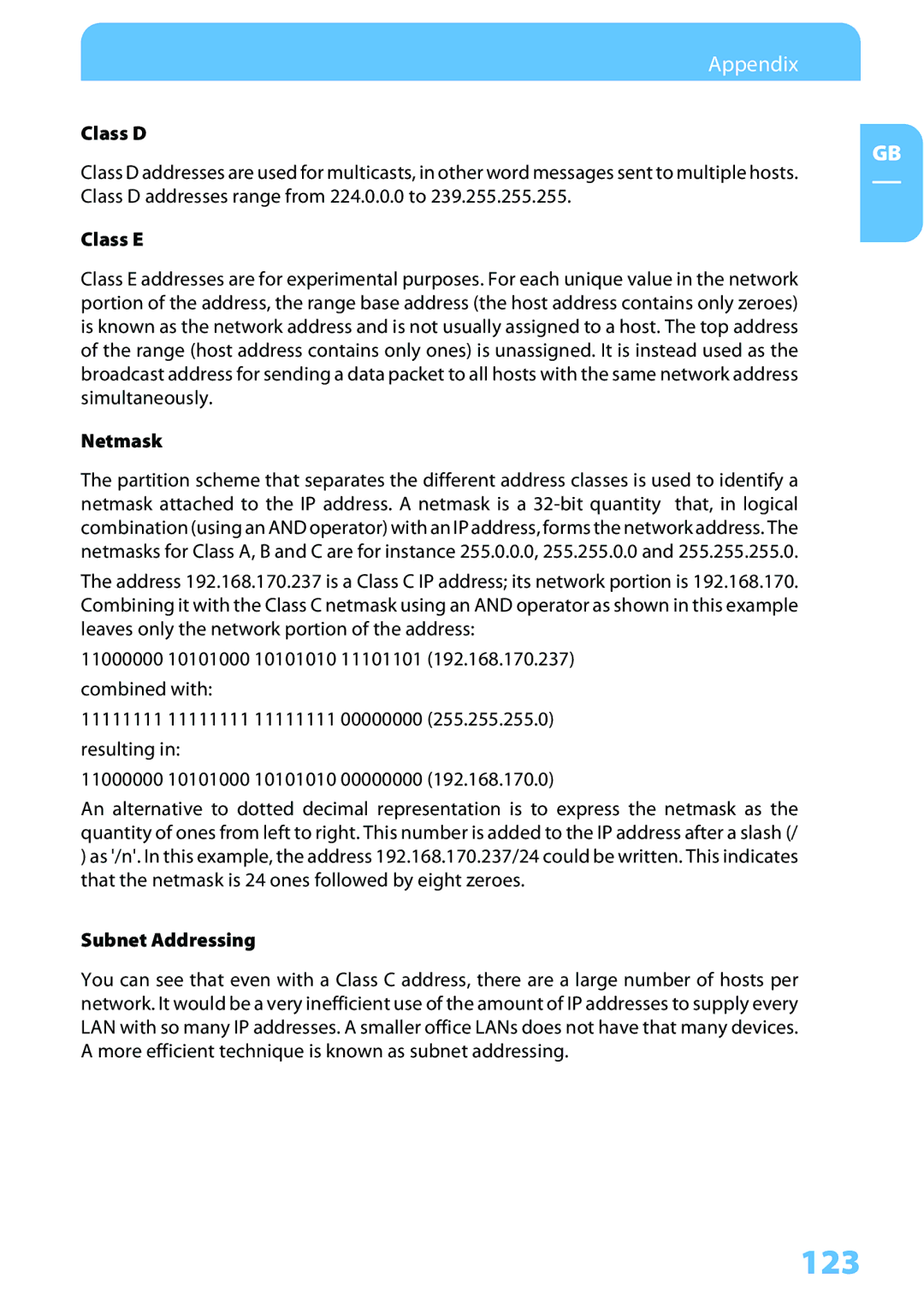
Appendix
Class D
GB
Class D addresses are used for multicasts, in other word messages sent to multiple hosts. Class D addresses range from 224.0.0.0 to 239.255.255.255.
Class E
Class E addresses are for experimental purposes. For each unique value in the network portion of the address, the range base address (the host address contains only zeroes) is known as the network address and is not usually assigned to a host. The top address of the range (host address contains only ones) is unassigned. It is instead used as the broadcast address for sending a data packet to all hosts with the same network address simultaneously.
Netmask
The partition scheme that separates the different address classes is used to identify a netmask attached to the IP address. A netmask is a
The address 192.168.170.237 is a Class C IP address; its network portion is 192.168.170. Combining it with the Class C netmask using an AND operator as shown in this example leaves only the network portion of the address:
11000000 10101000 10101010 11101101 (192.168.170.237)
combined with:
11111111 11111111 11111111 00000000 (255.255.255.0)
resulting in:
11000000 10101000 10101010 00000000 (192.168.170.0)
An alternative to dotted decimal representation is to express the netmask as the quantity of ones from left to right. This number is added to the IP address after a slash (/
)as '/n'. In this example, the address 192.168.170.237/24 could be written. This indicates that the netmask is 24 ones followed by eight zeroes.
Subnet Addressing
You can see that even with a Class C address, there are a large number of hosts per network. It would be a very inefficient use of the amount of IP addresses to supply every LAN with so many IP addresses. A smaller office LANs does not have that many devices. A more efficient technique is known as subnet addressing.
